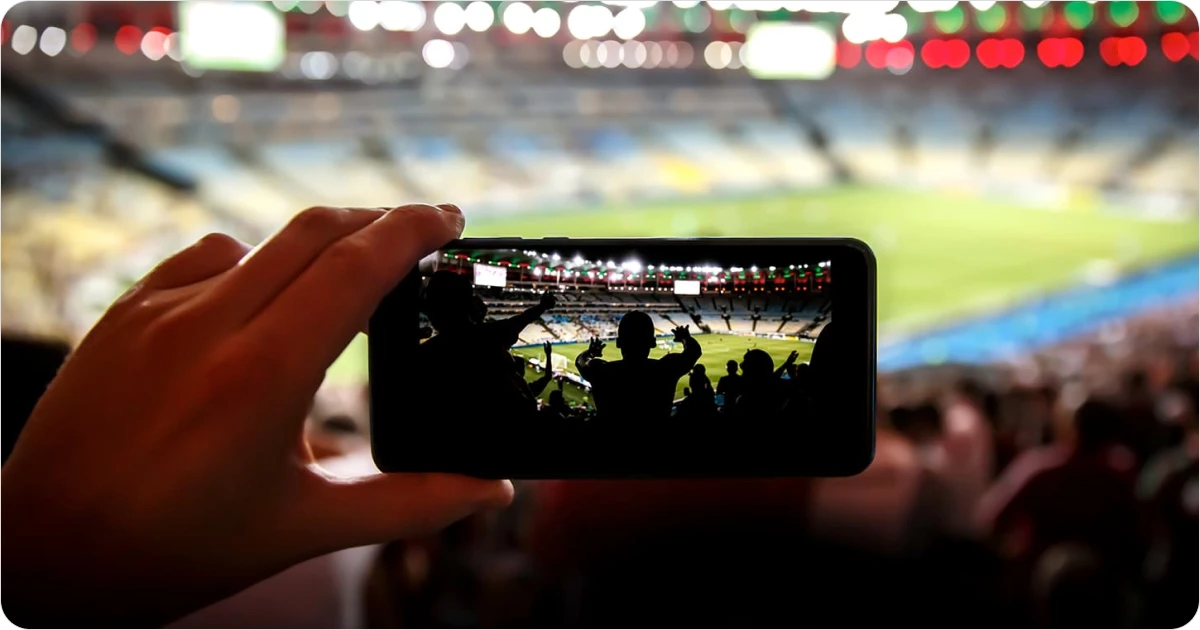

The professional sports industry has a Gen Z problem. Gen Z ticket purchases are falling – 47% and many have never seen a professional sports event in person (source).
That’s not all – Gen Z viewership of major sports events is lower than other generations. Ignoring this problem will cripple future growth. Improving Gen Z sports engagement starts with understanding what Gen Z likes.
Trend 1: Sports Clips Are Growing In Popularity

Sports highlight clips have been around for years. However, Altman Solon’s 2022 Global Sports Survey found that nearly one-third (27%) of US sports fans prefer clips to watch a full-length sports broadcast.
The popularity of short video content is no surprise when you look at the success of short videos on social media. TikTok – famous for its 60-second videos – is pulling in impressive viewership numbers. TechCrunch reported that teens are spending 91 minutes a day on TikTok in 2021, compared to 56 minutes spent on YouTube.
The success of sports clips can take a few forms depending on your content access. For broadcasters and publishers with broadcast rights, it’s easy to create short highlight clips that show significant moments, like a star player performing at their best or a controversial foul call. If you don’t, then hosting a reaction video, or AMA with an expert or athlete can be a great way to create clips that resonate with Gen Z.
There’s still an opportunity to succeed in this sports short video content. The 2022 Global Sports Survey uses the term “snackable content” to describe short-form videos. Think of ways to highlight sports in short video formats.
Short video creation is one way to connect more effectively with Gen Z audiences.
Download our white paper “Generation Z and the Rise of the Second Screen” and transform your sports strategy today.
Trend 2: Augmented Reality and Virtual Reality Are Drawing Interest
The appeal of sitting back on a couch and watching sports on a TV alone is falling for today’s sports fans. Industry research shows that AR and VR technologies continue to grow in popularity. AR technology is particularly significant because using many smartphones already support this capability.
AR technology presents an exciting opportunity to drive revenue. Retail Dive reports that 92% of Gen Z shoppers want to use AR in shopping. AR can help lift sales of apparel, collectibles, and beyond for sports.
VR technology is at an earlier stage of adoption. Twenty-six percent of US teens own a VR device as of 2022, according to a Piper Sandle survey, but only 5% currently use the devices daily. That gap between VR ownership and usage suggests a need for more engaging VR experiences. Filling that gap may unlock higher engagement with Gen Z audiences.
There are a few different ways to use VR to boost engagement. Altman Solon’s research suggests using VR to simulate the in-arena viewing experience. That could mean allowing people to view the action from prime seats near the 50-yard line in a football stadium.
Further, VR technology may allow Gen Z to connect more deeply with their favorite players. Picture your star players wearing helmet cams to share their perspectives on the action. That experience is better suited to sports like ice hockey and football, where players wear protective helmets.
Trend 3: Second-Screen Experiences Are Growing
A growing number of Gen Z viewers experience television as a second screen experience where the TV is a primary screen, and a mobile device is the second screen.
Given that behavior, publishers and brands have two choices. They can create integrated second-screen offerings that pair well with TV – the most powerful way to sustain engagement. Or they can ignore the second-screen opportunity and hope that Gen Z doesn’t tune out…
Creating engaging second-screen experiences can take a few different forms.
Mobile Communities
As we talked about in our recent blog “Gen Z Wants Something Different From Social Media: Are you Ready?” The majority of Gen Z prefer community based, vs feed based, social experiences. Creating your own community, specially optimized for mobile, is a great way to get Gen Z to engage. And with options like Arena, you can set one up in minutes, on your own brad properties.
Social Media Feeds
While community based wins over feed-based with Gen Z, part of the reason might be because most feed based platforms come packaged with a lot of public noise. By contrast, creating your own, curated feed – complete with reactions, comments – is a great way to give your fan base the relevant content the crave in a brand safe environment. Arena’s live blog is perfect for this, and comes mobile optimized right out to the box.
Trend 4: Blockchain and Cryptocurrency Are Popular
Cryptocurrencies are popular with Gen Z. According to a 2021 estimate, “Gen Z [cryptocurrency] buyers outnumber Gen X buyers by 3.5x and Boomer buyers by 14.3x.”
While popular with Gen Z, launching a cryptocurrency may not make sense for a broadcaster or sports brand.
Another way to leverage Gen Z’s enthusiasm for crypto is to offer non-fungible tokens (NFTs). Sports NFTs are digital collectibles. Unlike traditional items, it’s easy to create variations and limit supply. The cryptographic aspect of NFTs is tricky.
Multiple sports brands and athletes have already launched and sold NFTs. NBA Top Shot is particularly interesting since it aligns with the first trend. When a person buys an NBA Sop Shot token, you own an official NBA video clip. Many well-known athletes like Serna Williams, Tom Brady, and Shaquille O’Neal have also bought NFTs.
Trend 5: Reimagine The Stadium Experience For Gen Z

Drawing Gen Z audiences into the sports stadium is challenging. It is estimated that nearly half (47%) of Gen Z have never watched a sports event in person. That behavior is a significant concern for sports teams and others in the arena space. In the United States alone, ticket sales generate over $13 billion in annual revenue (source).
Affordability is one reason that may be holding Gen Z from attending live events. Team Marketing Report estimated the cost for a family of four to attend an MLB event at $256 and NFL games at $590.
There are a few ways to solve the affordability issue. First, look for ways to offer more ticket options, including low-priced tickets or special prices based on age. Second, make the live sports experience more appealing by offering more Gen Z-friendly amenities like better connectivity.
High-performance digital connectivity is critical to engaging Gen Z. Wi-Fi 6 technology, launched in 2019 because Gen Z loves to use bandwidth-intensive video. In addition, Network World points out that implementing “private 5G” services is becoming more popular. Verizon has already started working on dedicated connectivity services for stadiums.
Now Is The Time To Engage Gen Z Audiences
Most of the Gen Z audience are in their 20s and younger. Now is the perfect time to create experiences that inspire loyalty and engagement for the long term. Act on one or more of these trends fast to succeed with Gen Z.



